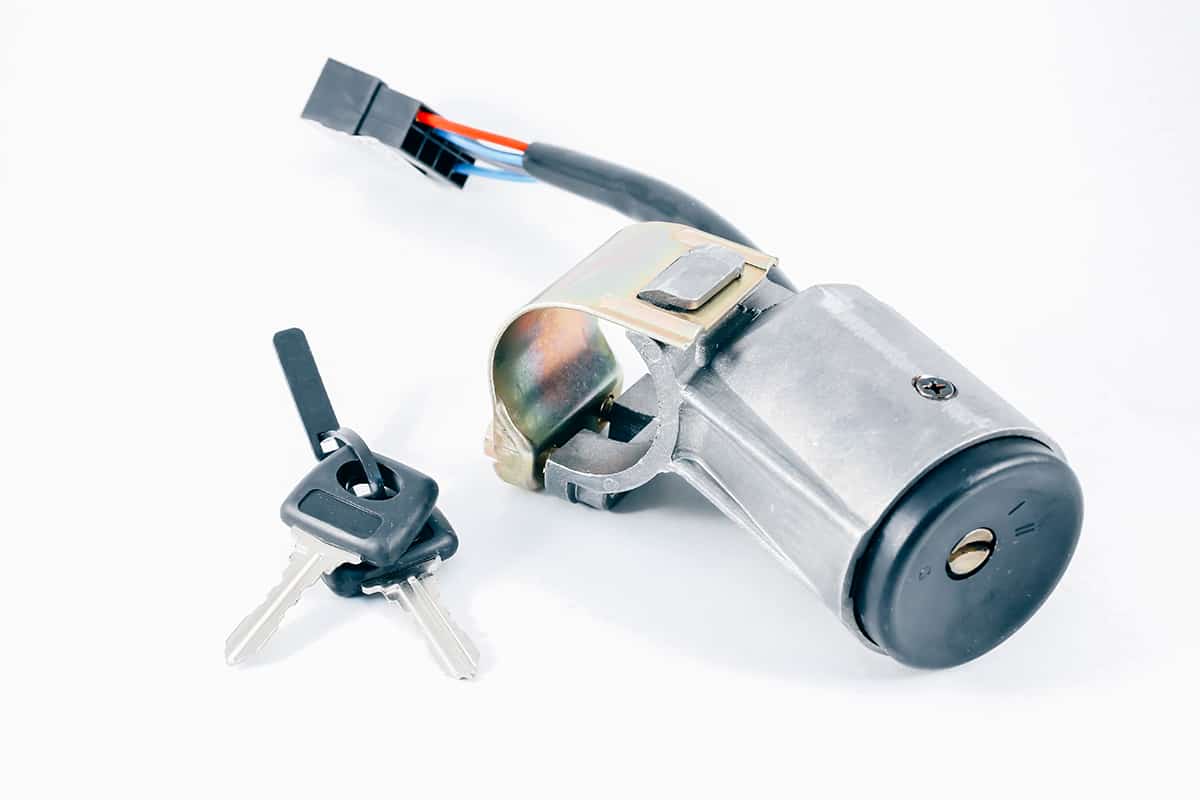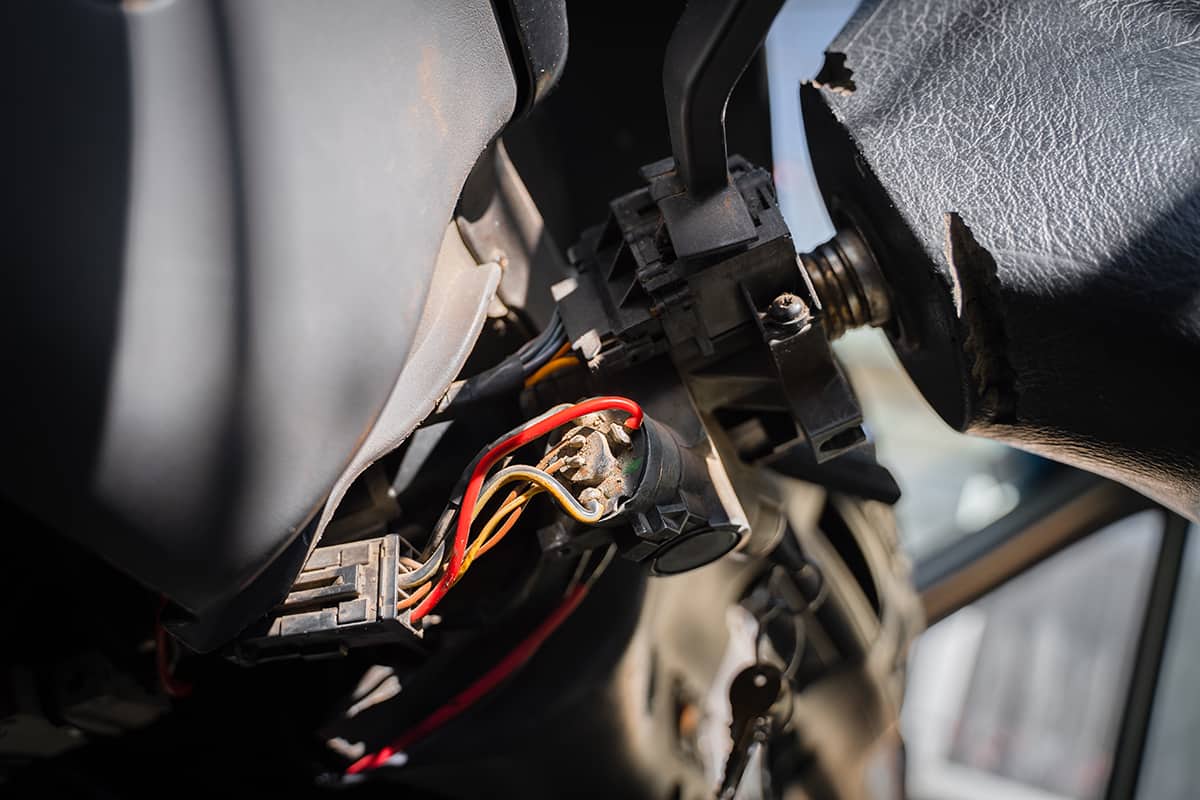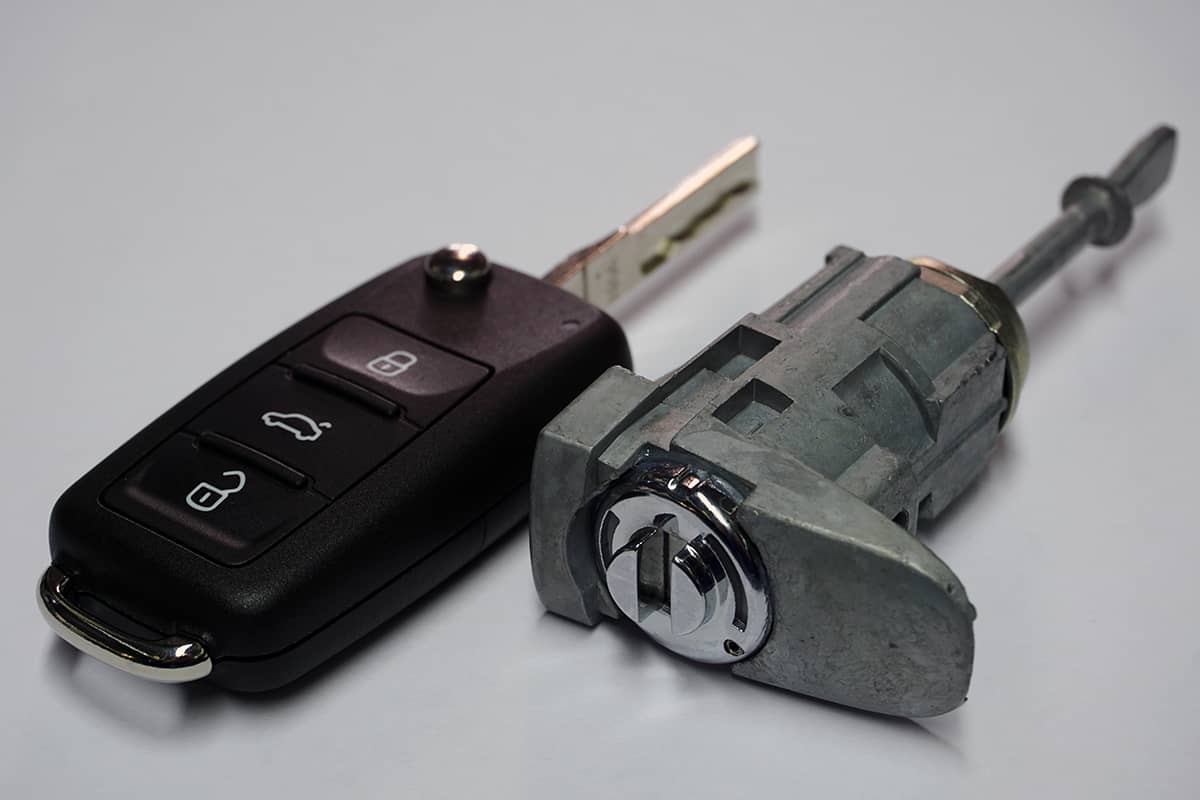Have you ever found yourself in a situation where you need to remove the ignition lock cylinder from your car, but you don’t have the key? Whether you’ve lost your key or it’s simply not working, removing the ignition lock cylinder without a key can be a tricky task. However, with the right tools and some patience, it’s definitely possible to do it yourself.
Follow these steps if you want to remove the ignition lock cylinder without a key:
- Remove the steering column cover
- Disconnect the electrical connections
- Remove the ignition lock cylinder retaining pin
- Extract the ignition lock cylinder
In this blog post, we’ll guide you through the process of removing the ignition lock cylinder without a key, step by step.
What is the Ignition Lock Cylinder?

The ignition lock cylinder is a small, cylindrical device found in the steering column of your vehicle. It consists of housing, a set of tumblers, and a keyhole. The tumblers match the unique pattern of your key, allowing the cylinder to turn when the correct key is inserted.
When the correct key is inserted into the ignition lock cylinder, the tumblers align, allowing the cylinder to turn. This sends an electrical signal to the vehicle’s ignition system, starter motor, and other electrical components, enabling the engine to start.
When Would You Need to Remove the Ignition Lock Cylinder?
There are several situations where you might need to remove the ignition lock cylinder. The most common reasons include:
- Lost or damaged key: If your key is lost or damaged beyond use, you may need to remove the cylinder to replace it with a new one or to get a new key made.
- Worn or damaged cylinder: Over time, the ignition lock cylinder may wear down or become damaged, making it difficult to insert, turn, or remove the key. In such cases, it’s necessary to replace the cylinder.
- Vehicle theft attempt: If someone has attempted to steal your vehicle and damaged the ignition lock cylinder in the process, you may need to remove and replace the cylinder to restore proper function and security.
How To Remove The Ignition Lock Cylinder Without a Key (and Install a New Ignition Lock Cylinder)
Now, let’s jump to the crux of the matter: how to deal with removing the ignition lock cylinder without a key.
Safety precautions
- Before working on the ignition lock cylinder, disconnect the negative battery terminal to prevent accidental electrical discharge or short circuits.
- Make sure your vehicle is in park or neutral and the parking brake is engaged. This ensures the vehicle remains stationary while you work on it.
- Wear safety glasses and gloves to protect your eyes and hands from debris or sharp objects during the process.
Gathering the necessary tools
To remove the ignition lock cylinder without a key, you’ll need the following tools:
- Screwdrivers (flathead and Phillips)
- Pliers
- Small pick or paperclip
- Steering wheel puller (if necessary)
- Replacement ignition lock cylinder
Step 1: Removing the steering column cover

Locate the screws holding the steering column cover in place. Remove the screws using a Phillips screwdriver. Gently pry apart the upper and lower covers to expose the ignition lock cylinder.
Step 2: Disconnecting the electrical connections
Find the ignition switch connector located near the ignition lock cylinder. Carefully detach the connector by pressing the release tab and pulling it away from the cylinder.
Step 3: Removing the ignition lock cylinder retaining pin
Locate the retaining pin on the side of the ignition lock cylinder. Use a small pick or paperclip to depress the pin.
Step 4: Extracting the ignition lock cylinder
Turn the ignition lock cylinder to the “Accessory” position using a flathead screwdriver. Gently pull the cylinder out of the steering column.
Step 5: Installing the new ignition lock cylinder
Align the new ignition lock cylinder with the steering column. Push the cylinder into place, ensuring the retaining pin clicks into position. Test the new cylinder to make sure it turns smoothly and engages the ignition system correctly.
Step 6: Reconnecting electrical connections
Reattach the ignition switch connector to the new ignition lock cylinder. Check the connections to ensure they are secure and properly aligned.
Step 7: Reassembling the steering column cover
Position the upper and lower steering column covers around the ignition lock cylinder. Reinsert the screws and tighten them to secure the covers in place.
Step 8: Reconnecting the battery
Reattach the negative battery terminal. Test the new ignition lock cylinder to make sure it functions correctly.
Troubleshooting Common Issues
When removing or replacing the ignition lock cylinder, you may encounter some common issues. Here are a few problems and their solutions:
1. Ignition lock cylinder won’t turn
If you find that the ignition lock cylinder won’t turn after replacing it, make sure that the tumblers are correctly aligned with the key or screwdriver. Ensure that the retaining pin is fully engaged and not obstructing the cylinder’s movement. Lubricate the cylinder with graphite powder if it’s still difficult to turn.
2. Key won’t insert or remove
If the key is not inserted or removed smoothly, inspect the cylinder for debris or damage. If the key is damaged, you may need a new one. If the issue persists, consider replacing the ignition lock cylinder, as it may be damaged or worn out.
3. Steering wheel locked
If the steering wheel is locked and won’t release, try turning the wheel slightly in both directions while turning the key or screwdriver in the ignition lock cylinder. This often releases the steering lock mechanism. If the steering wheel remains locked, the ignition lock cylinder or steering lock mechanism may be damaged and require professional assistance.
When to Seek Professional Help
While removing and replacing the ignition lock cylinder can be a manageable task for some vehicle owners, there are situations where it’s advisable to seek professional help.
1. When to consult a locksmith
If you’re unsure about the process or uncomfortable working on your vehicle’s ignition system, a locksmith can provide expert assistance. Locksmiths specialize in key and lock-related services and can help with tasks like creating a new key without removing the ignition lock cylinder or addressing issues related to damaged or worn-out cylinders.
2. When to visit a mechanic
In some cases, the ignition lock cylinder issue may be a symptom of a more complex problem with your vehicle’s electrical or ignition system. If you’ve replaced the cylinder and continue to experience issues like difficulty starting the engine or intermittent electrical problems, it’s time to consult a mechanic. A skilled mechanic can diagnose and repair underlying issues, ensuring your vehicle operates safely and efficiently.
FAQs
1. Can I use a universal ignition lock cylinder for my vehicle?
While universal ignition lock cylinders are available, it’s generally better to use one specifically designed for your vehicle make and model. This ensures proper fit and functionality, reducing the risk of complications and ensuring a secure connection with your vehicle’s electrical system.
2. What if I can’t locate the ignition lock cylinder retaining pin?
If you’re having difficulty locating the retaining pin, consult your vehicle’s service manual or an online guide for specific instructions related to your make and model. The retaining pin’s location may vary, so having accurate information will help you find and access it more easily.
3. Is it possible to get a new key made without removing the ignition lock cylinder?
Yes, it’s possible to have a new key made without removing the ignition lock cylinder. A professional locksmith can create a new key by decoding the cylinder’s unique tumbler pattern. However, if the cylinder is damaged or worn, it may still need to be replaced to ensure proper functionality.







